History holds an uncountable number of secrets. We may live in the "Age of Information." Still, there's a disconnect between the vast amount of information that we have access to and the lack of ingenuity displayed by so many contemporary artworks. You can find beauty in the most mundane of objects—just look at the carvings engraved on an old spoon or a key.
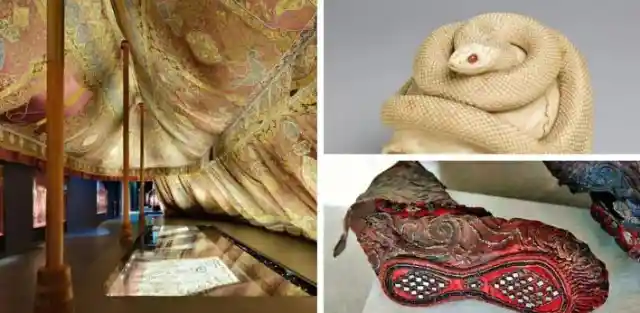
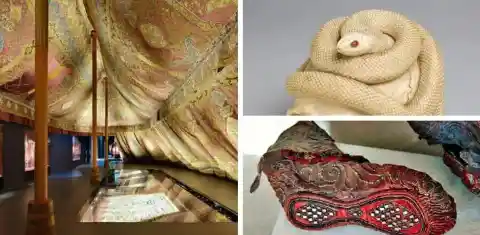
Such everyday items have inspired some of history's greatest artists, who have crafted breathtaking works of art from them. History is full of lesser-known masterpieces that are often overshadowed by famous pieces. So, to honor the best of the best, we've collected a list of some of history's greatest masterpieces.
A Thousand Year Old Mayan Figurine
Every kid has a favorite toy they use to impress their friends. Imagine that you and a friend lived in 500 B.C., and they had a cool action figure that made you green with jealousy. Like this fantastic Mayan ceramic figure that is over 1,500 years old!
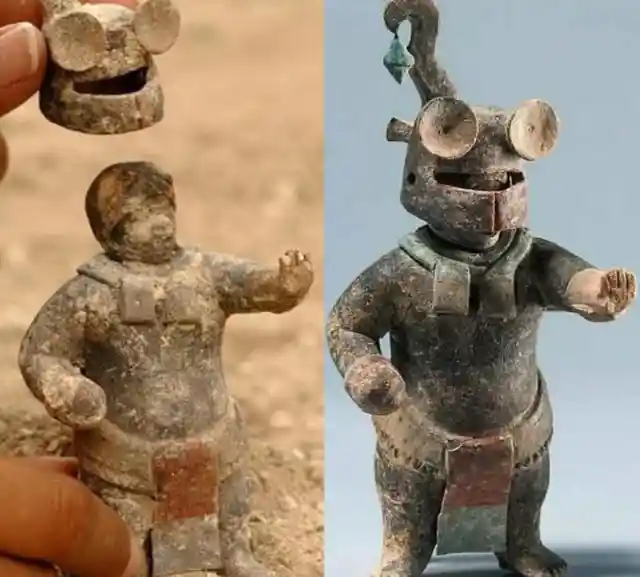
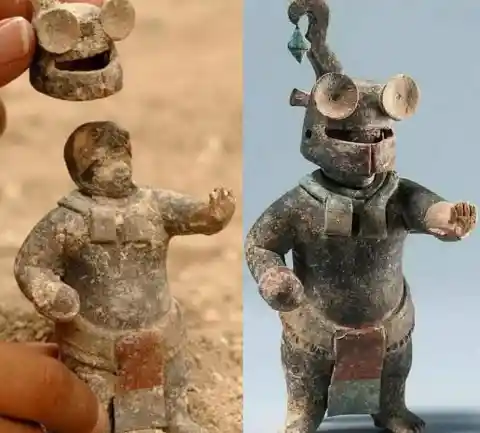
This beautifully crafted little man comes with its own removable headpiece. It is said to be a part of a set of 23 figures. These figurines were used in the royal funerary rituals to accompany the dead on their journey through the underworld.
Majestic Marble Sculptures
It is fascinating to wonder how artists in centuries gone by made such exquisite pieces of art. Prime examples are these marble sculptures which were made across Europe. The sculptures are so detailed and lifelike that it's hard to believe they were carved centuries ago.
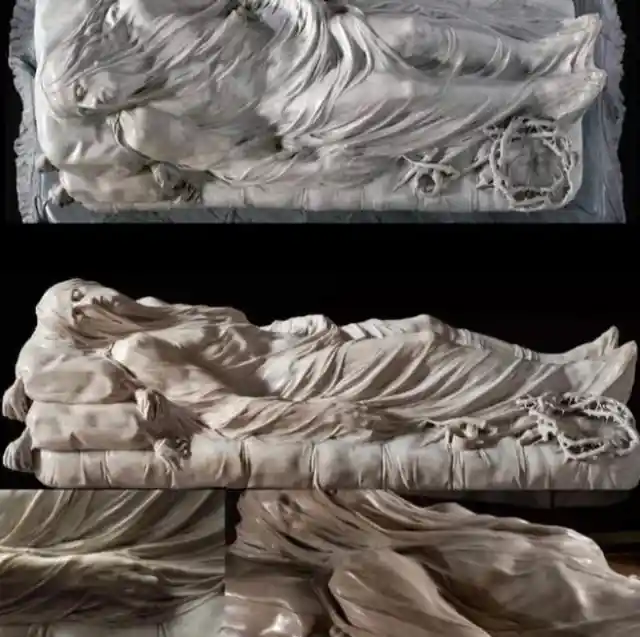
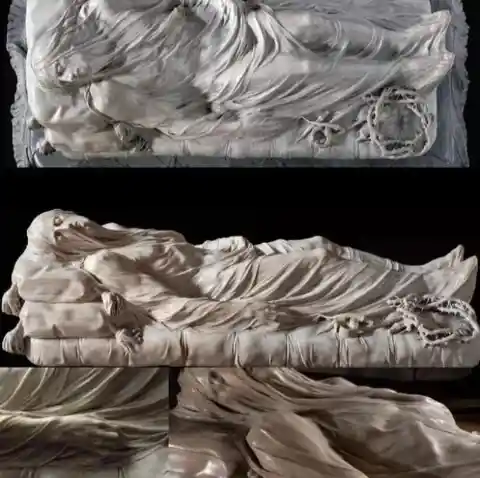
The sculpture "Veiled Christ" by Giuseppe Sanmartino is permeated with rich religious symbolism, which dates back to 1753 and is an impressive sight to see. The very fabric that covers him is so intricately detailed that you can see the veins in the hands.
Astronomical Clock from the 15th Century
For centuries, people have been creating art from clay, stone, marble, and other materials. Sculpting statues has always been a way for humans to express their creativity. But it's not enough for a sculpture to be aesthetically pleasing. Many of the world's most famous statues have a practical purpose!
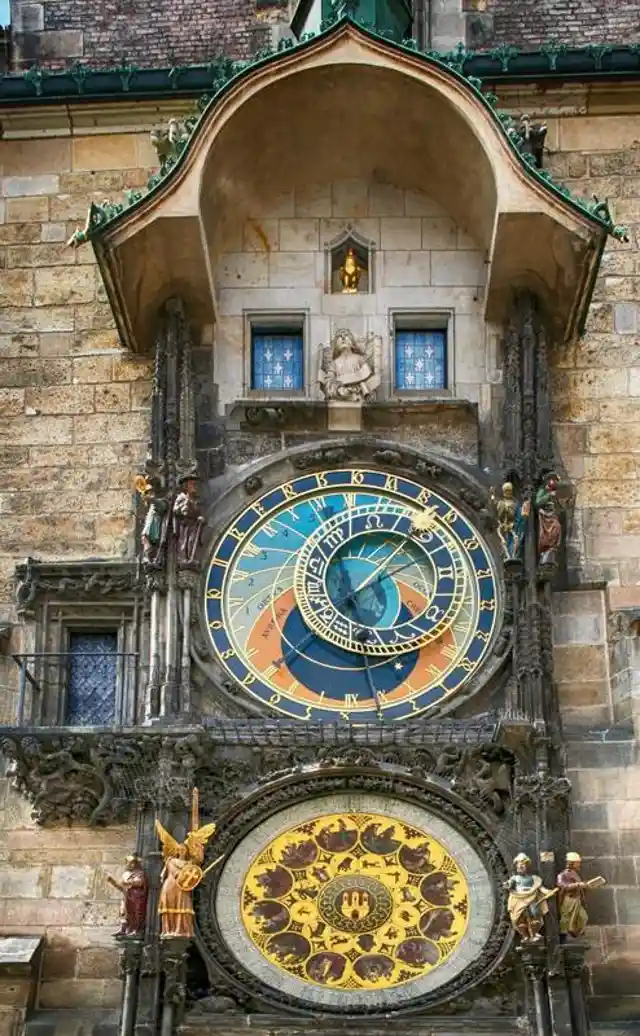
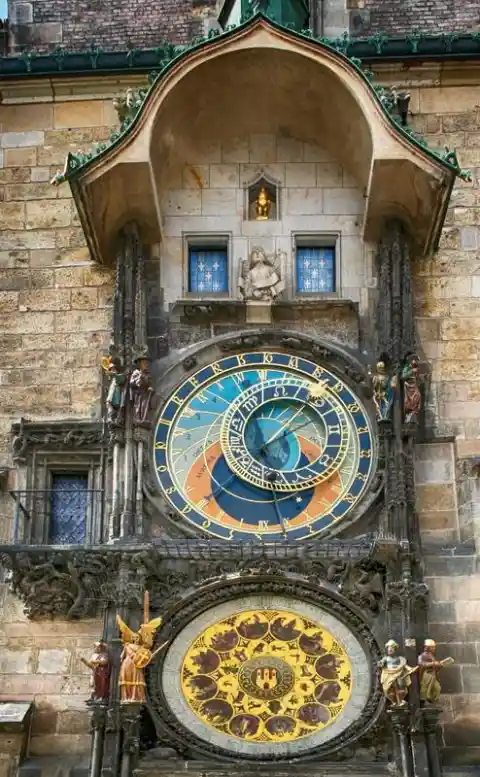
Prague’s Astronomical Clock is a masterpiece built in the 15th century. It features both a calendar and an astronomical dial. It has since been called the third-oldest astronomical timepiece in the world, and it’s also the oldest one that still functions correctly.
Ratto di Prosperina
If you're a fan of art, chances are you've heard of at least a few of the greats. Names like Leonardo da Vinci and Michelangelo are synonymous with art history. But if you're not well-versed in art terms, here's one more name to learn: Gian Lorenzo Bernini.
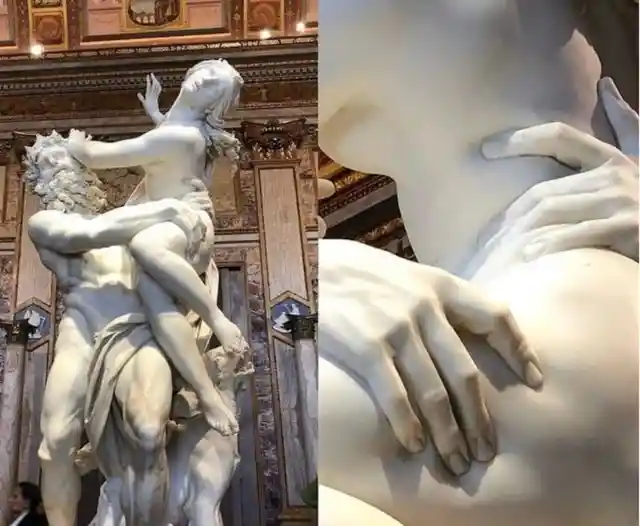
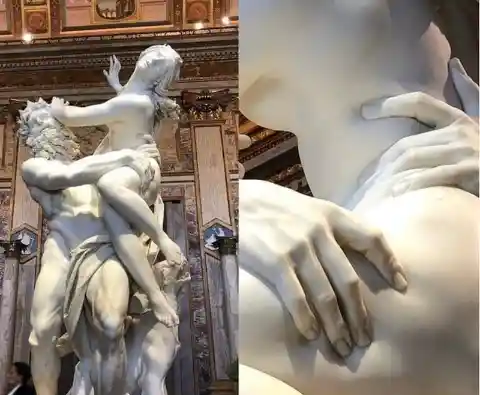
Gian Lorenzo Bernini’s Ratto di Prosperina, a statue of solid marble, captures the realness and tone of muscle and flesh in all its delicacy and is most well-known for being a key early example of the Baroque movement.
Birdhouses of the Ottoman Empire
Birds are amazing creatures with their own distinct personalities and stories to tell. The pastime of birdwatching can be fun, relaxing, or even a full-time job for some. It's a popular hobby that has been around since ancient times, and people all over the world are still getting involved today.
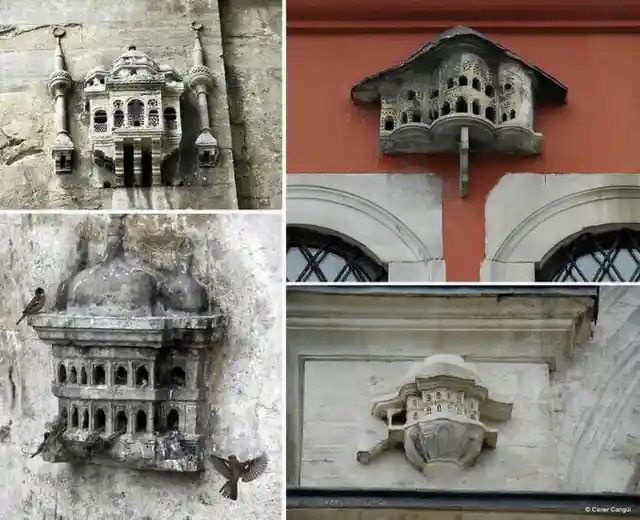

The history of the Ottoman Empire and its magnificent buildings, renowned for their impressive carvings and art, is one that should be treasured. But perhaps more so in our contemporary world, these small but striking stone birdhouses may remind us just how beautiful their civilizations were and meaningful art was to their culture.
14,000-Year-Old Bison Sculpture
What comes to mind when you see Renaissance-era masterpieces? Skill, resilience, and a great eye for detail. Here’s another example of skill, resilience, and detail: The 14,000-year-old bison sculpture that's so good that most people would think that it's a modern masterpiece!
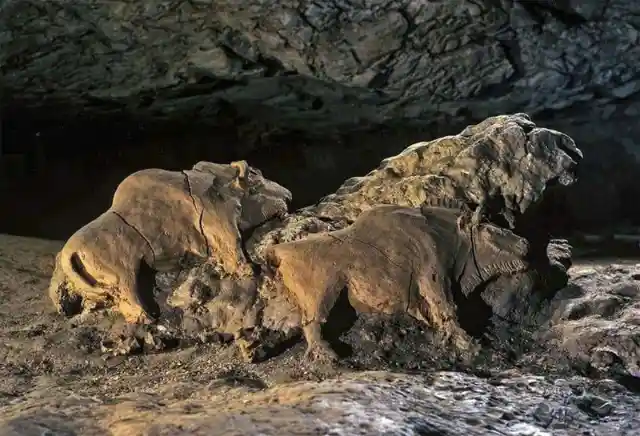
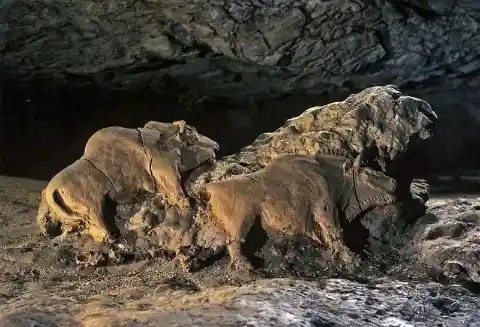
The Le Tuc j’adoube Cave, located in the rural French region of Cantal, contained a remarkable discovery. Archaeologists found a sculpture made from a single piece of stone and the fingernails of its creator. It is thought to be the earliest known work of human art.
The Crystal Arrowhead
Imagine finding this incredible artifact in your backyard. This 5,000-year-old spearhead or arrowhead was discovered in Spain. It was not only remarkably well preserved, but it was also made entirely out of crystal!
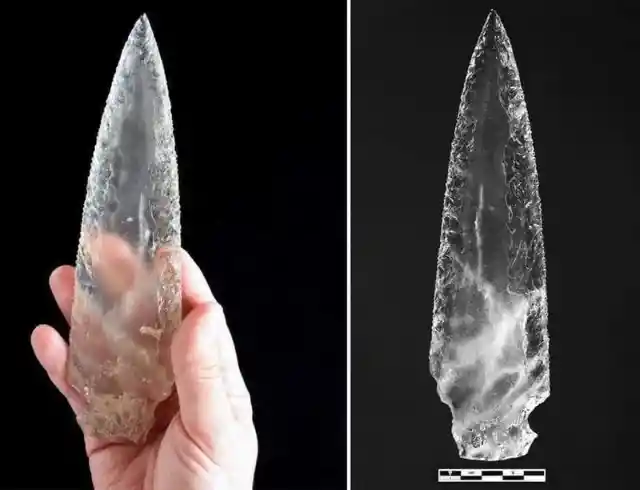
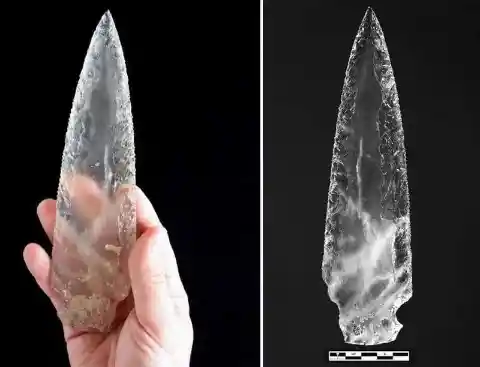
When this tip of a crystal-made spear was discovered in a tomb along with 25 bodies, the archaeological community was amazed by the amount of skill it took to make such a well-made artifact out of solid rock crystals.
The Ring of Caligula
If you love shiny things, you'll be amazed by a 2,000-year-old ring—it's both beautiful and stomach-turning. Almost the entire piece was cut out of sapphire, which is an amazing feat of jewelry-making for its time.
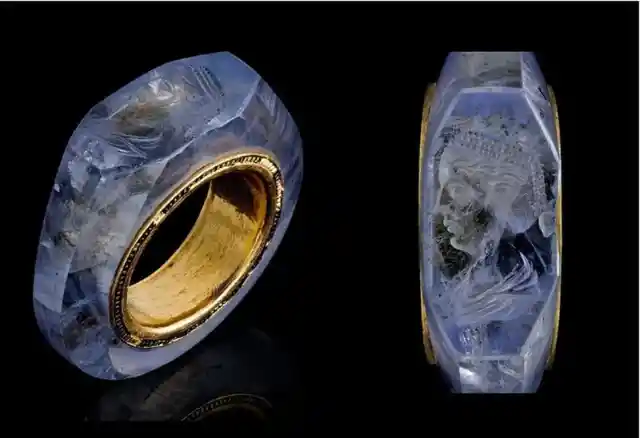
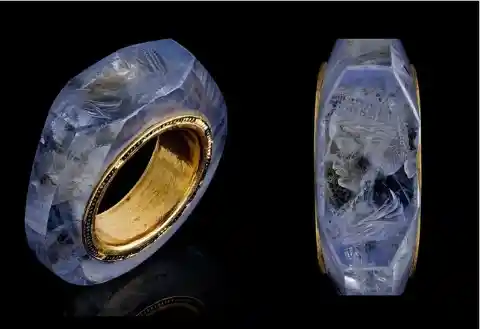
What makes the discovery of this ring so remarkable is the fact that archaeologists believe the ring belonged to one of Rome’s most depraved emperors, Caligula, as the image of the woman on the ring is believed to have been Caligula’s wife, Caesonia.
Iranian Windmills
When you picture a windmill, you might think of a tall tower with Dutch-style furnishings and a rectangular sail, like from an 1820s American painting, or the ones Don Quixote mistook as giants. But windmills in Iran look very different!
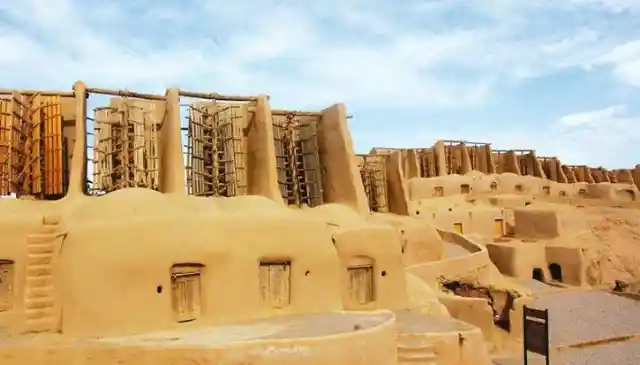
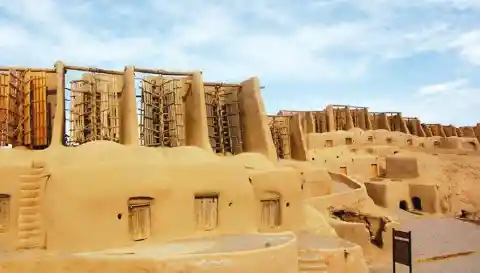
These windmills, made of wood, straw, and clay, are believed to be over 1,000 years old. Some still function today. The idea of using wind energy spread from Iran into what was then called Persia and then all across the world.
The Hercules Armor
If you're a history buff, a lover of Medieval-themed shows, or an appreciator of fine art and decorative armor, this suit from the 16th century, The Holy Roman Emperor Maximillian II’s Hercules Armor, is sure to impress. Just look at this intricate metalwork.
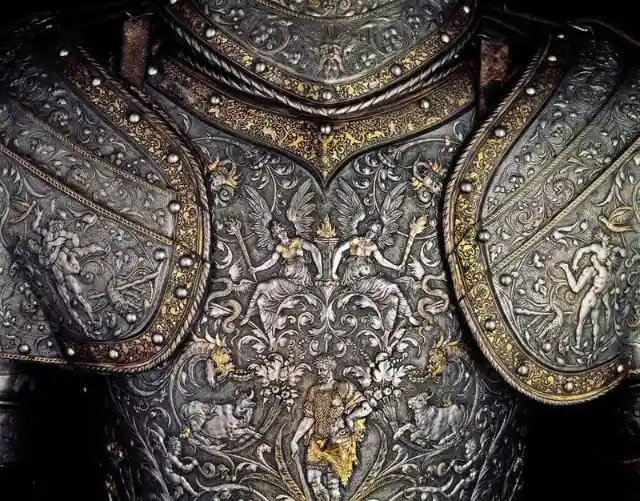
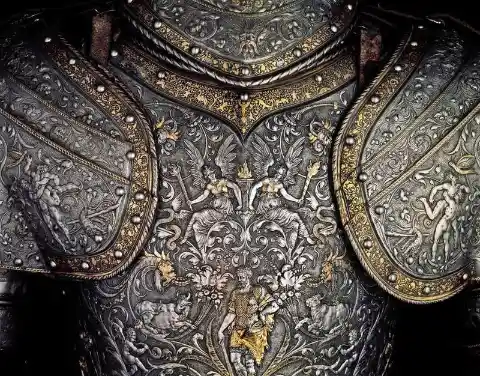
The Holy Roman Empire was not Roman and not even Italian. It was a German empire that had its capital in Rome. The Hercules armor, made by the German artisans, is covered with religious and mythological icons, which make it a true work of art.
Ancient Old Face Cream
Many cosmetic products are so commonplace now that we can hardly imagine life without them. But imagine the surprise of older generations to find that products like face cream, which covers signs of aging and may even reduce wrinkles, weren’t invented recently.
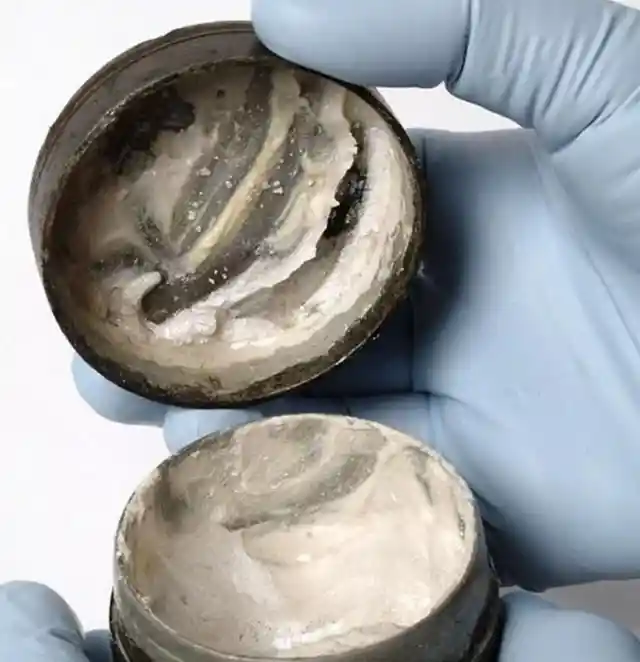
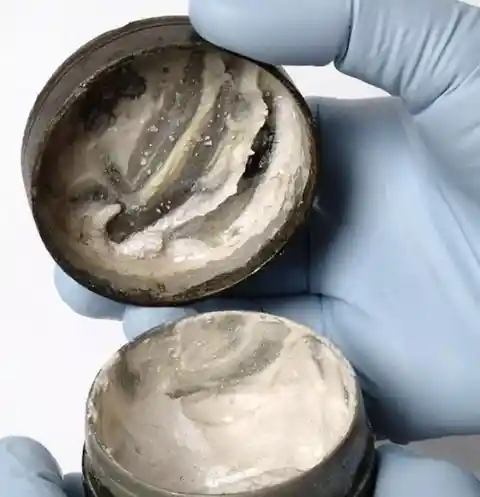
This tin, which was discovered in Rome in 1983, is over 2,000 years old and contains what is believed to be the oldest face cream ever found. The ingredients are animal fats, starch, and minerals. Would you ever try their recipe?
Golden Octopus Helmet
If your eyes popped out upon seeing the huge, elaborate, gold, and silvery piece that once guarded Emperor Maximilian, then you’ll probably be pretty blown away to see this strange samurai helmet which is covered in a golden octopus.
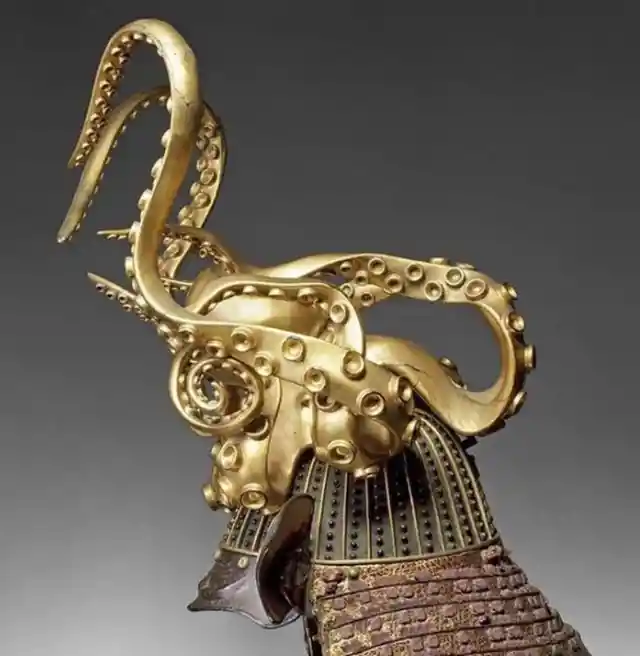
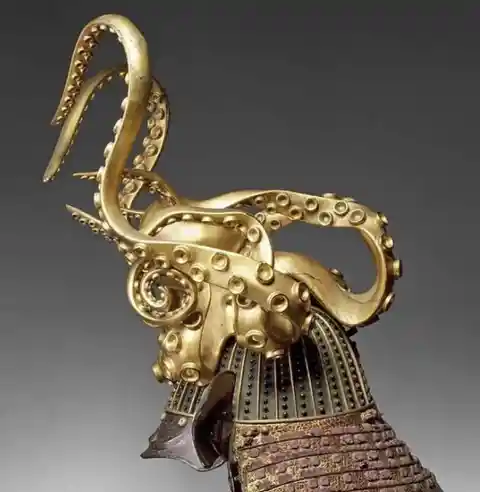
The helmet is about 300 years old and is on display in Florence at Italy's Stibbert Museum. Many believe that the octopus design represents Akkorokamui, an ancient Japanese sea god associated with healing power. It's also associated with fickleness.
Greek Glass Mosaic
Sometimes you have to stop and marvel at the sheer amount of lost beauty in the world. This 2,000-year-old glass mosaic of the Greek muses was recovered from what remains of the ancient city of Zeugma in modern-day Turkey.
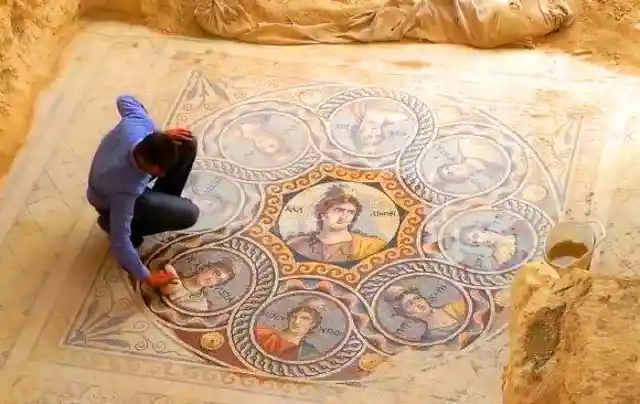
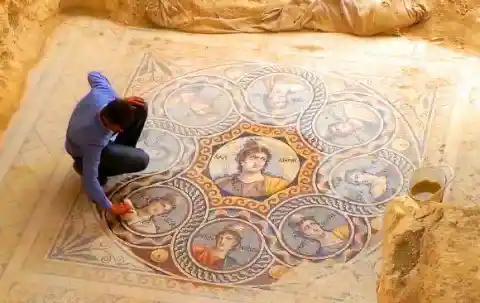
This mesmerizing mosaic, which once adorned a wealthy Roman’s villa in the ancient city of Zeugma, has been able to stand the test of time. The city was previously a part of Greece before it was taken over by the Romans and named Commagene after the King.
Huts Made Out of Mammoth Bones
You might have already seen how prehistoric people made sculptures of clay and crystal tips for spears or arrows. Now, we’ll see how they made and decorated some of their homes. They did this by making huts out of mammoth bones and hides.
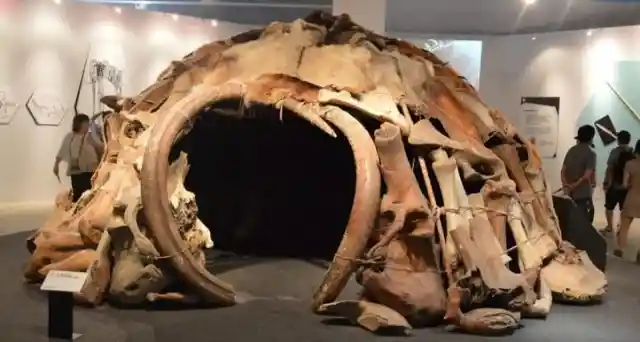
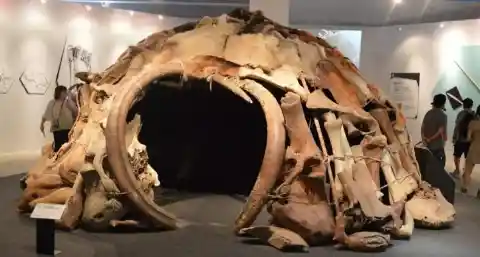
Archaeologists made an exciting discovery—during prehistoric times, the first house in the world was partially built using mammoth bones! These scientists gained new insights into the lives of our ancestors and opened up new possibilities regarding paleo-ecology.
Ice Age Ochre Paintings
Prehistoric people were not only creative builders, but they were also surprisingly skilled artists. This giant painting was found deep within the forests of the Amazon. Archaeologists have theorized that the painting dates as far back as the Ice Age.


This painting from the Upper Paleolithic period, which was drawn using ochre, is one of the most important pieces of art in human history. It not only depicts ancient people and animals, but it also tells a story about a key moment in our evolution.
Ottoman Tent
The tent is a useful invention. It allows people to assemble and disassemble portable shelters in just a matter of minutes. Tents have been commonplace throughout much of recorded history and are still used for various purposes in different parts of the world.
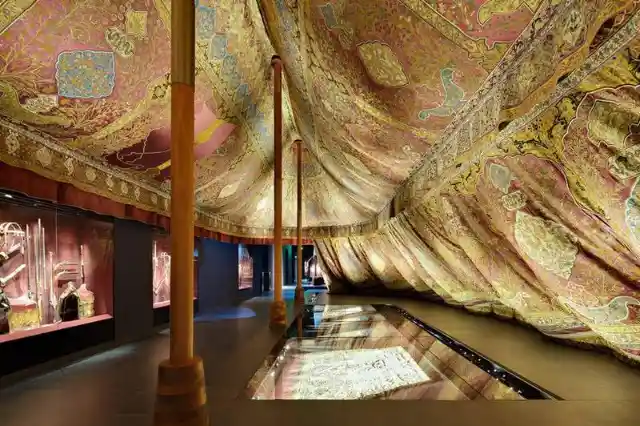
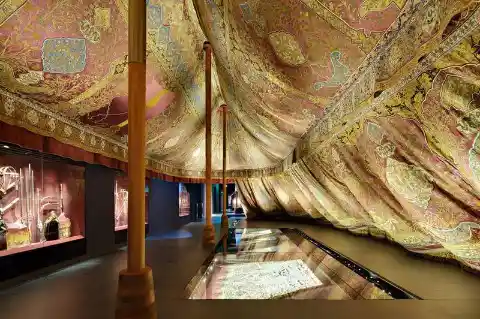
This 17th-century silk, cotton, and satin Ottoman tent was used for sheltering goods and housing people or for the nobility’s ceremonial events. The tent is said to be eight meters wide, twenty meters long, and six meters high!
Iranian Fish Bowl
This bowl was made and expertly painted in the Iranian city of Kashan between the 13th to 14th centuries. Its colors and proportions make the fish seem like they are swimming right to the center of the bowl.
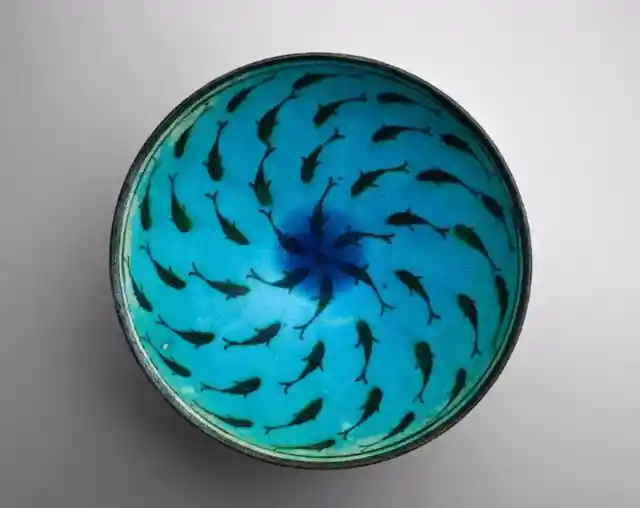
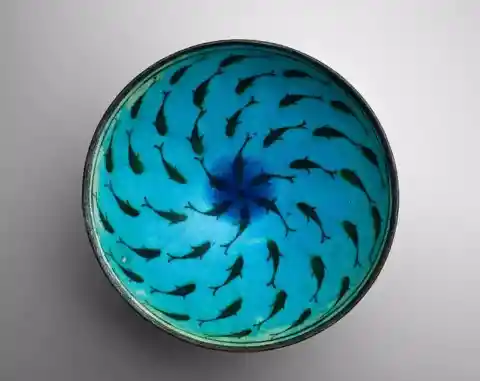
This bowl and similar pieces are currently on display in the Hossein Afshar Collection at Houston's Museum of Fine Arts. Wouldn't it be nice if bowls like these were more commonplace? They would really help you to step up your hosting game!
3,000 Year Old Paint Palette
Ancient Egyptians were on the top of their game when it came to decorating their spaces. Here’s an example of their inventiveness: as you can see from this amazingly preserved collection of color samples, it’s the predecessor to today’s paint palette.
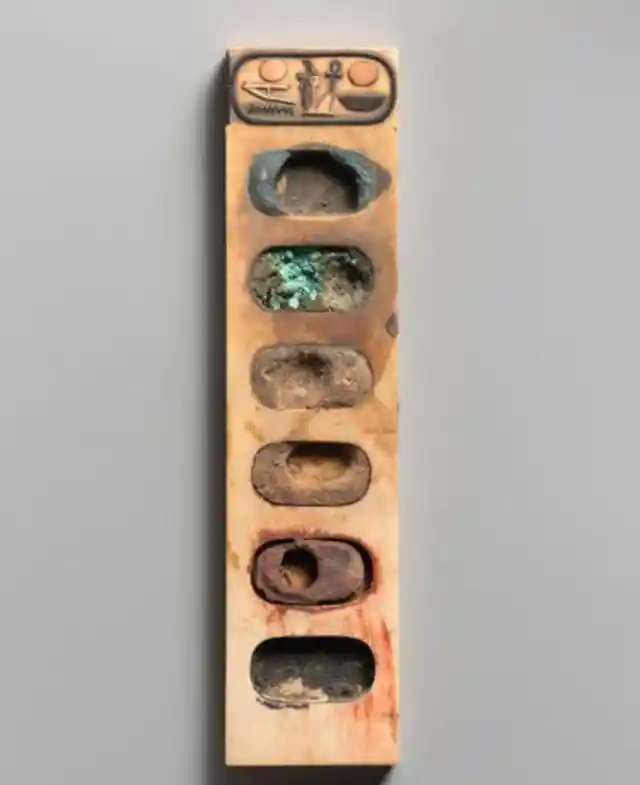
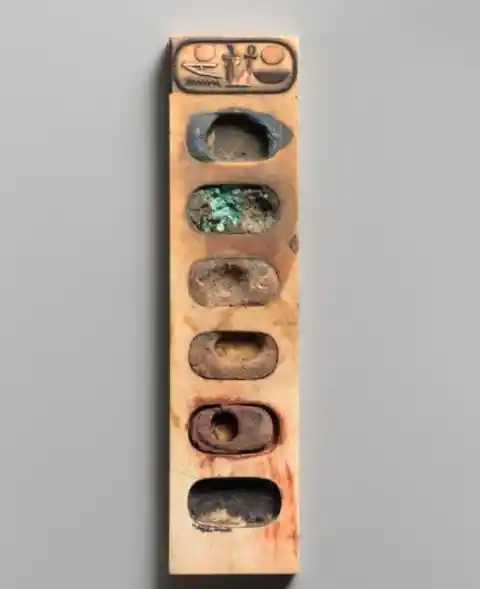
This proto-palette was used by pharaohs in the time of ancient Egypt. It's more than 3,000 years old! The decoration on the top helps us to identify which Pharaoh was ruling at the time. It's well preserved, with one side even still having some dried-up paint.
Abuna Yemata Guh
The lone mountain, Gheralta, found in Ethiopia, reaches a height of over 2,600 meters. But what’s really amazing about this landmark are the centuries-old churches that lie within the stone giant, including Abuna Yemata Guh.
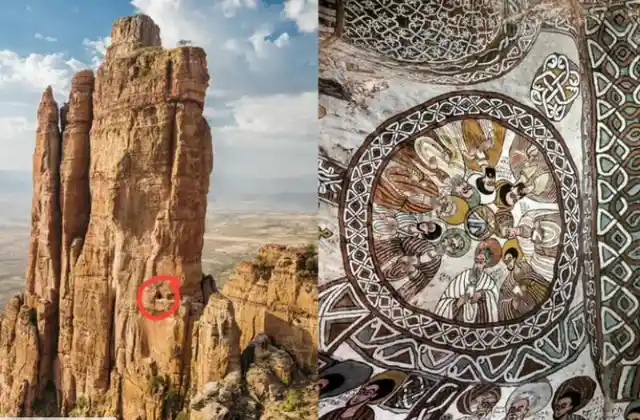
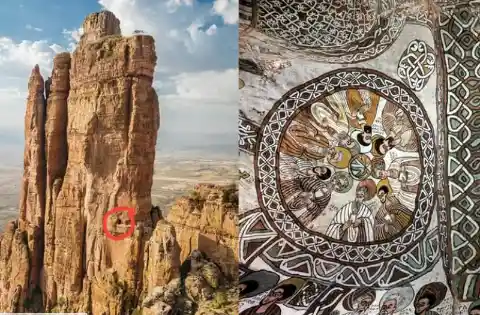
Abuna Yemata Guh is located 1,800m (5,900ft) above ground on the side of a sheer cliff face. It was built in honor of one of the Nine Saints who dedicated his life to spreading Christianity. The Abuna Yemata Guh is one of several churches carved into the rock face by medieval Ethiopian Christians, many of which are still standing today.
Ancient Egyptian Ring
In Ancient Egypt, it was quite common to see people wearing jewelry, including bracelets and rings. This one might look like the gummy rings you might be able to buy in a candy shop, but it is actually an authentic Ancient Egyptian artifact!
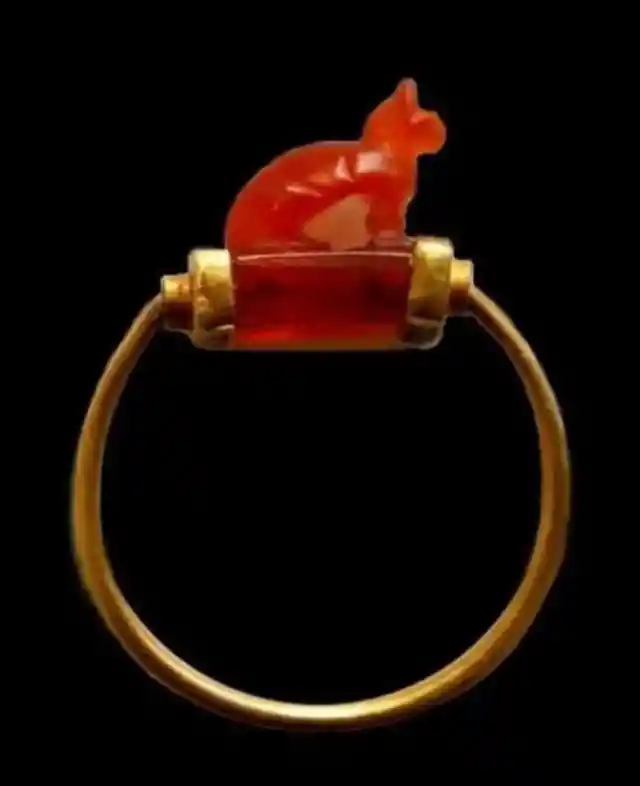
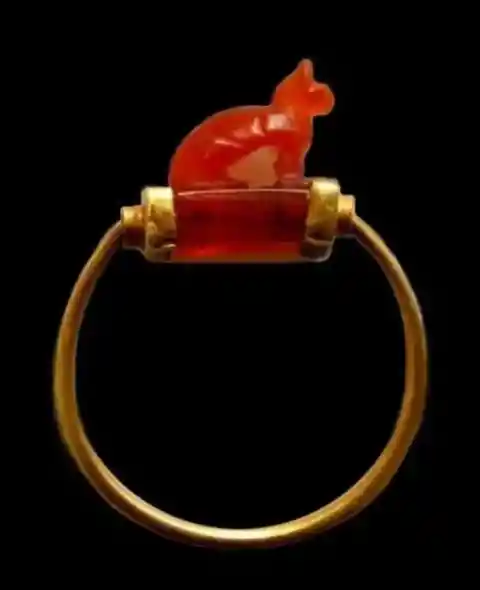
This ancient ring, made in 700 B.C., reminds us of the enduring importance of cats in Egyptian culture. The ring’s band is made from gold, and the cat is cut from carnelian stones. The piece is clearly in great condition!
The City of Cuzco
Not to be confused with the hilarious character Kuzco from Disney's The Emperor’s New Groove, Cuzco is a city in southeastern Peru near the Urubamba Valley of the Andes mountain range. Founded as the capital of the Incan Empire in the 15th century, it is known for its archeological remains and Spanish colonial architecture.
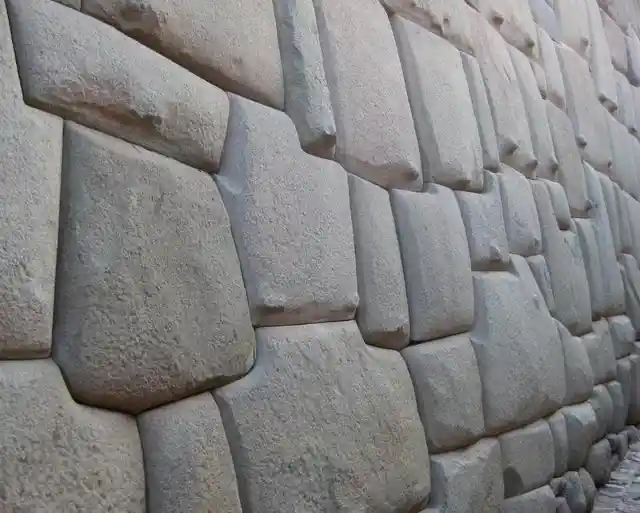
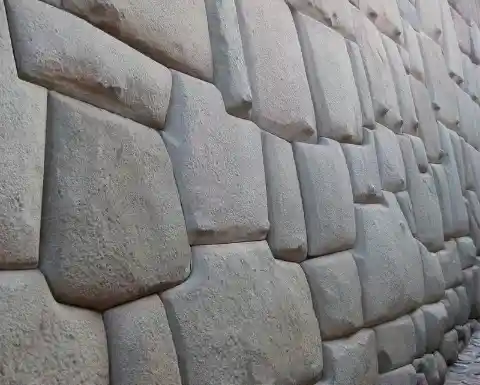
Cuzco, with its centuries-old walls and step streets, was named a UNESCO World Heritage site in 1983. The ancient walls were built almost 600 years ago. The walls withstood earthquakes over the centuries and today retain their original features. How did they lift all those stones, you may ask? You’ll have to ask the Incans yourself.
Ring from the Viking Era
Birka, Sweden, was once a significant Viking trading settlement. However, the extent of trade in this place has only recently been discovered by archaeologists. Recently, researchers excavating one of its many gravesites from that era found a ring encased in amber.
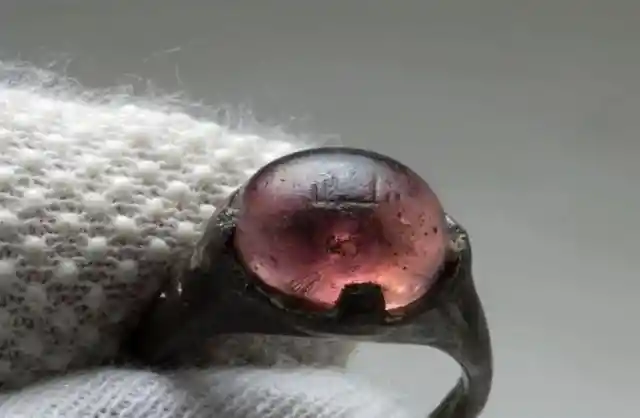
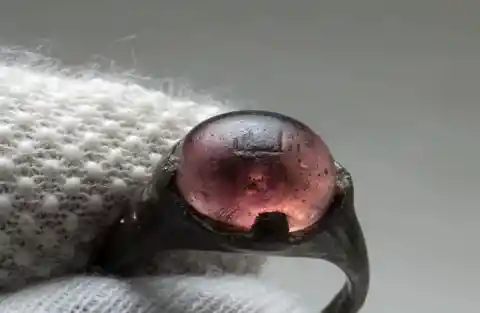
This ring is made from high-quality silver and has a gemstone that may be stained glass, but the really cool thing about it is that it has the Arabic inscription "for Allah." This proves the Norse had trade routes that connected to places all throughout the Middle East.
Gold and Sapphire Ring From the Medieval Era
Treasure hunting is a lot of fun, and even amateurs can make amazing discoveries, too! Just take a look at this gold and sapphire ring, for example. It was found in England's Sherwood Forest by someone who was just doing it for kicks.
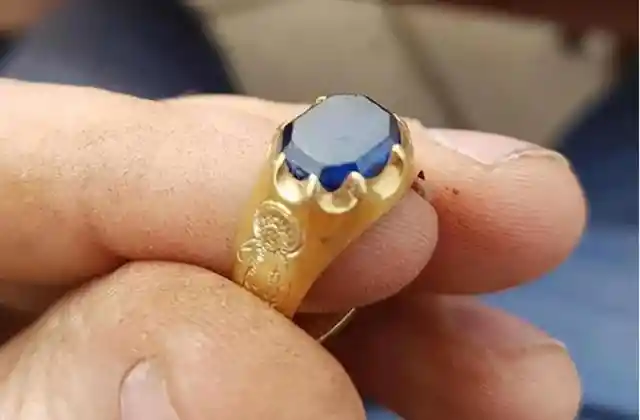
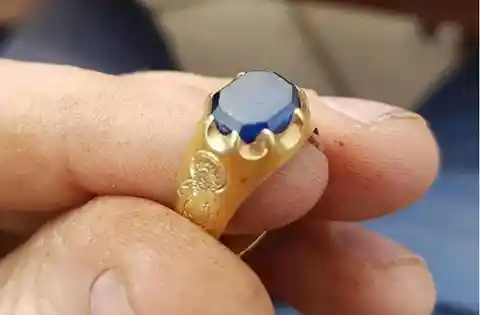
Archaeologists have dated this ring to the 14th-century at the latest, but they don't know who it might have belonged to. The ring features two etchings. The first appears to be Saint Brighid, and the second is likely Christ as an infant.
Otter Figurine
You might not be an expert on antiques, but we’re sure you’ll appreciate this unique find nonetheless. It's an Inuit carving cut from ivory. The Inuits are who have lived in the northern parts of Canada, Alaska, and Greenland for thousands of years.
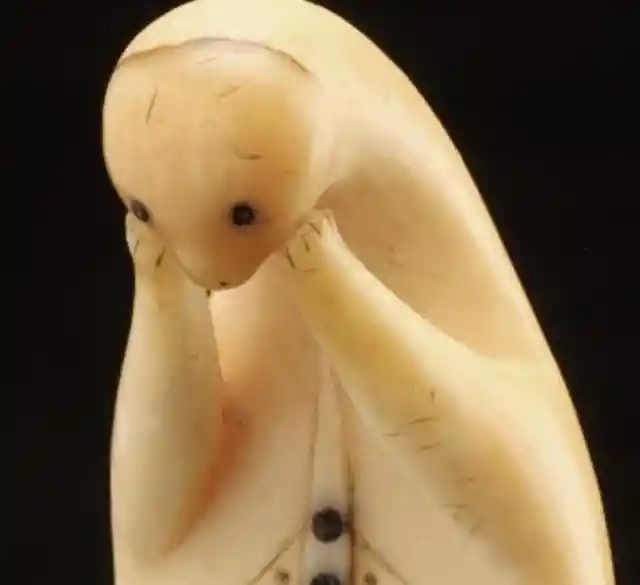
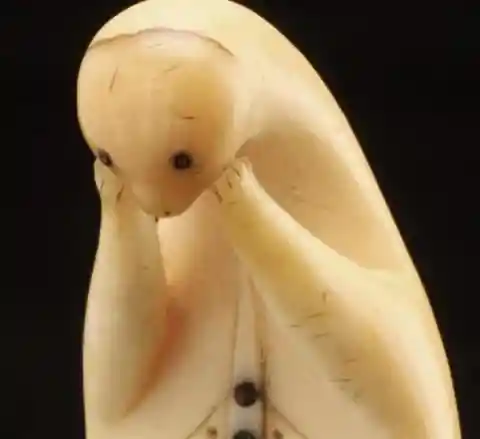
It's about 130 years old. It looks like a sea otter sitting on its back with both paws covering its face. Some believe that it might have been a lucky charm to bring good fortune when hunting. You can't know for sure, but you could use it as an ornament or just admire it for its beauty.
2,000-Year-Old Boots
It might seem hard to find a solid pair of boots that will both last more than two or three years and also look great on your feet. If you've ever felt this way, then these nearly-perfectly maintained 2,000-year-old boots will surely make you envious!
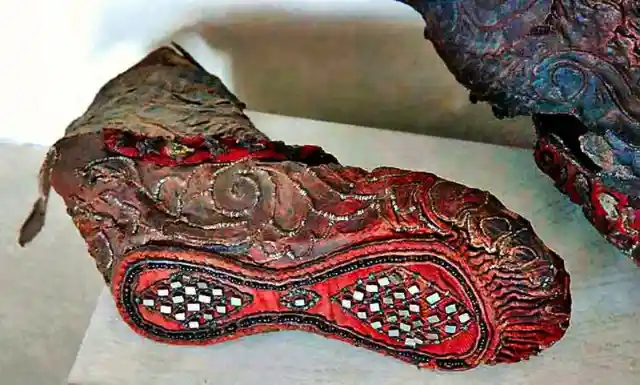
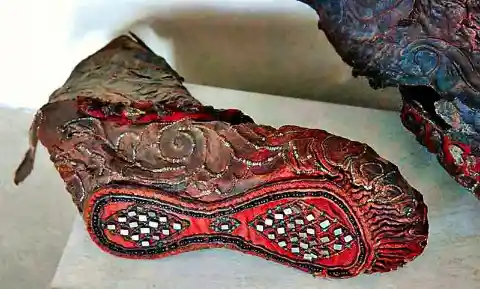
These 3,000-year-old leather boots were found in a Scythian burial site high in the Altai Mountains. The shape of the shoes suggests that they were worn by a woman. These incredible artifacts have been perfectly preserved thanks to the consistent temperature of their sub-zero environment.
Galileo’s Theory
Galileo was an important and influential thinker and is known as the father of astronomy, the scientific method, modern science and physics, and much more. Despite his popularity now, Galileo got in trouble with the Roman Inquisition by challenging conventional wisdom about the Earth revolving around the Sun.
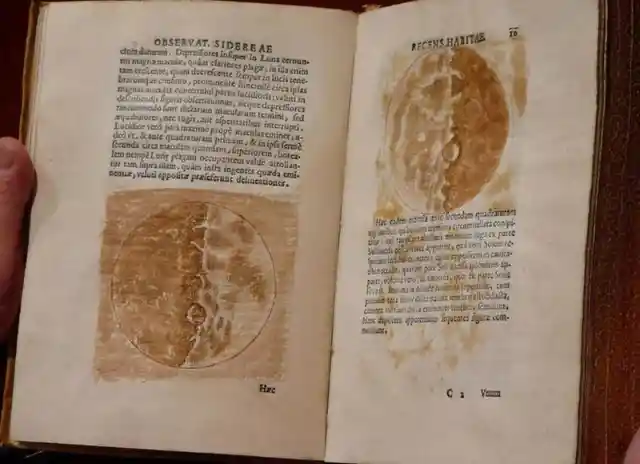
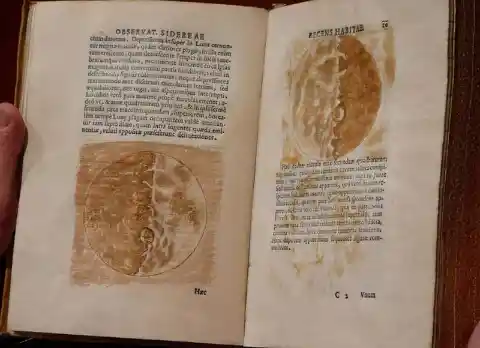
The moon goes through many changes when it is out in the night sky, but many people do not notice that it is not perfectly smooth as most people thought back then. Galileo studied the moon very closely during his time, and he discovered that it is actually filled with mountains and valleys across its surface, depicted in the picture above.
Beware Of Dog Sign
Most of us have probably seen one of these outside someone’s house. However, many people might be surprised to learn that the phrase is, in fact, ancient! The phrase seen commonly in towns and cities today dates back to Roman times.
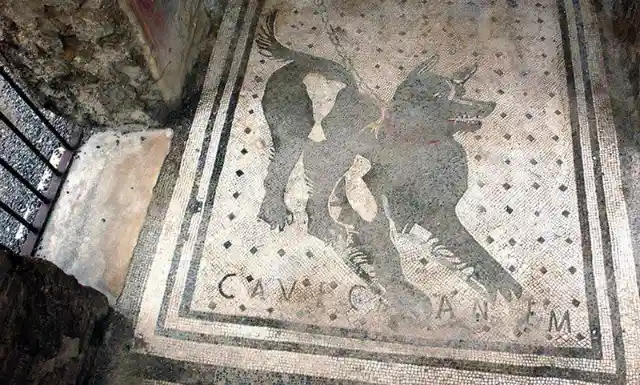
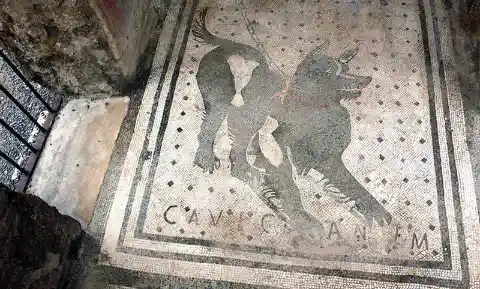
This mosaic, written in Latin, is believed to have come from the first or second century A.D. It was discovered during an excavation of ancient Pompeii. The mosaic reads “cave canem” or “beware the dog” and was likely created to mark the entrance to a home.
Sculpture of Death
There are many cultural symbols in art, literature, and film that try to personify death. One such figure is the grim reaper—a hooded skeleton with a scythe. Death has been depicted as a terrifying enemy of man in Europe since the 14th century.
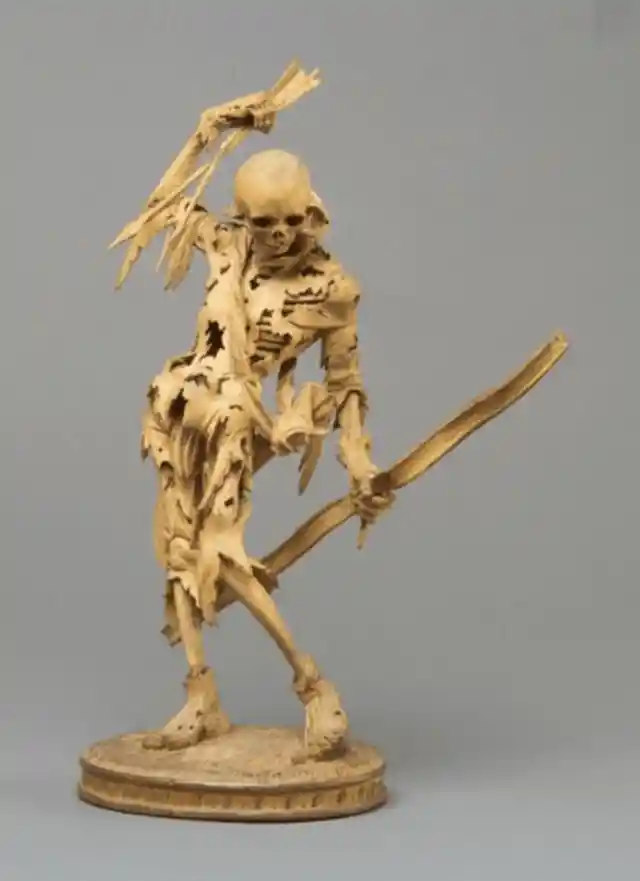
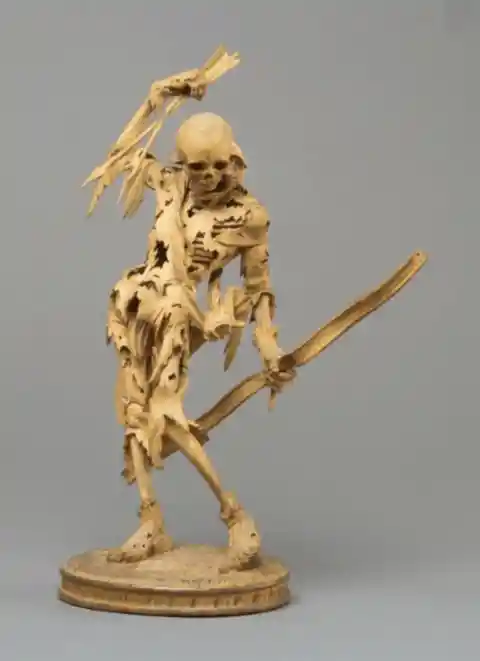
While the Grim Reaper is a popular western imagining of the concept of death, other representations exist that differ from the robed skeletal reaper. This German sculpture dates back to the 16th century and depicts Death wielding a bow and arrows rather than the traditional scythe.
Clothes For Mourning
When it comes to mourning, etiquette calls for somber clothes that are simple and black. Westerners have worn these types of clothes for hundreds of years. The most well-known example of this is the outfit worn by Magnus Brahe.
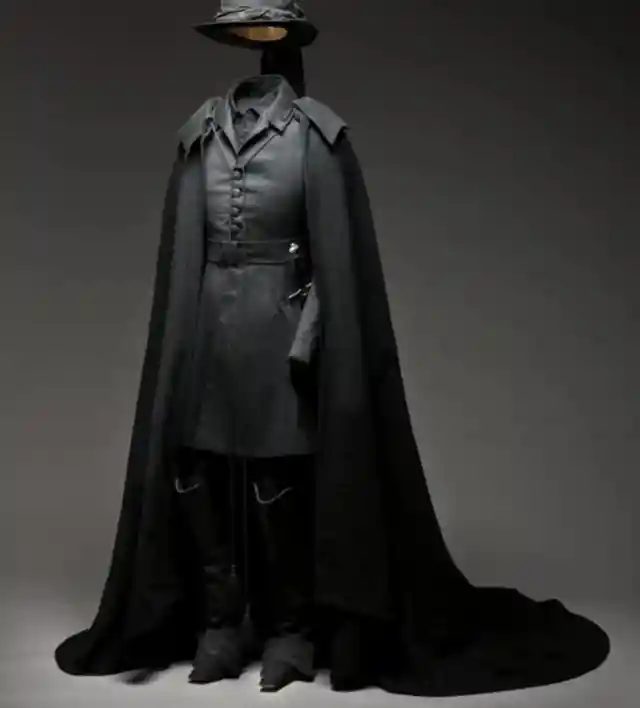
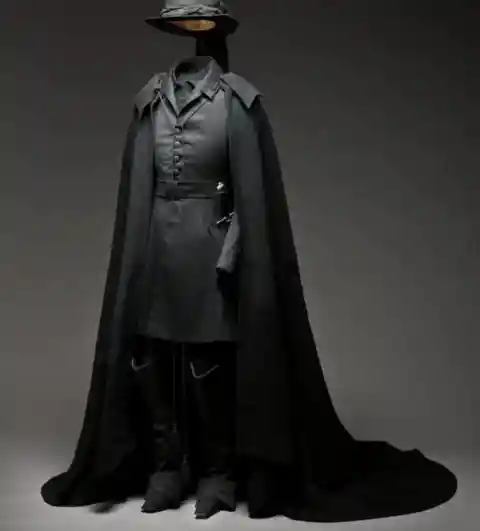
Brahe was an 18th-19th century Swedish count who served as a friend to the Swedish king, Karl XIV Johan. When King Karl XIV died in 1844, his favored companion Magnus dressed in this flamboyant Zorro-like outfit for the funeral to honor him.
Eye-catching Mouse Mosaic
The ancient world produced many great works of art. The Unswept Floor is both beautiful and fascinating. It was created from marble and glass by the Greek artist Heraclitus. Originally installed in a Roman villa for a dining hall, it's now housed in the Metropolitan Museum of Art.
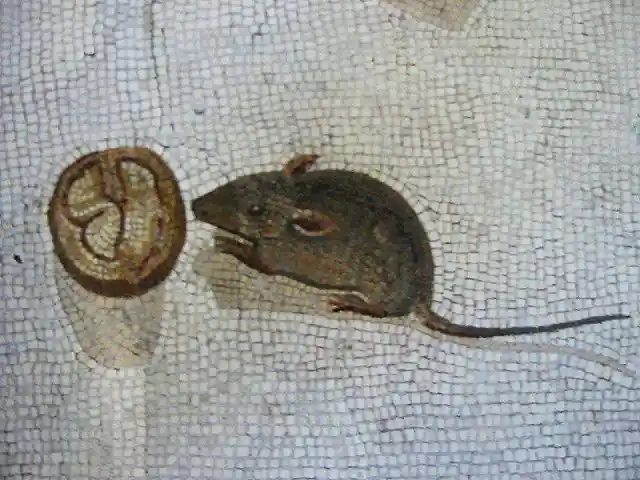
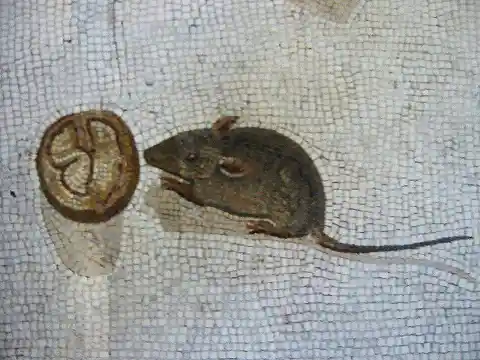
The tiny brown mouse nibbling on a discarded walnut may go unnoticed, but once you see it, you can't stop staring at its beautiful craftsmanship. It’s incredible how they managed to create shadows and dimensions with the use of marbles alone.
Century-Old Stockings
Take a moment to admire the craftsmanship of these beautiful leg warmers. The vibrant blue and yellow hues give off the aura of wealth and high class. Someone of high status must have commissioned these incredible stockings, made sometime in the 18th or 19th century.
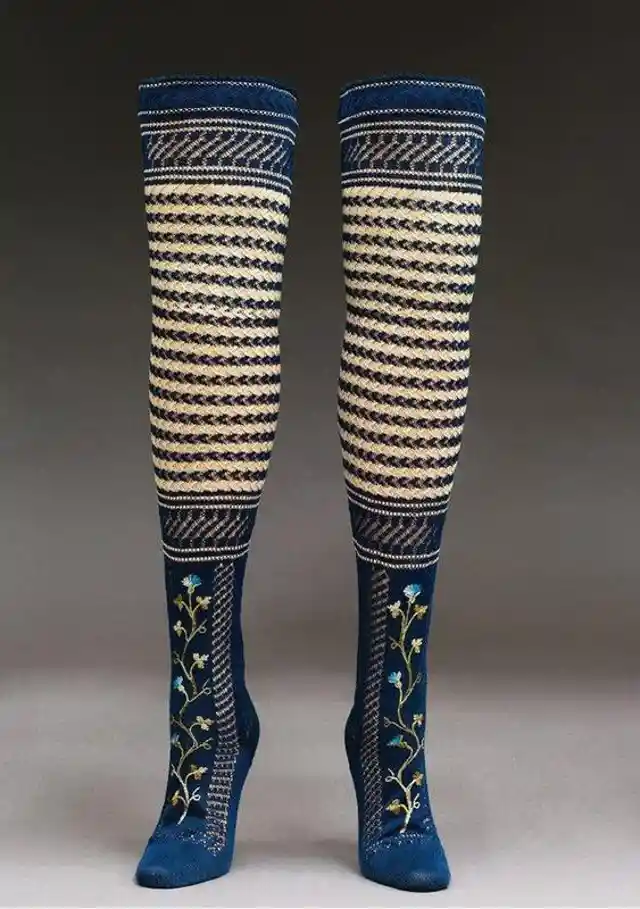
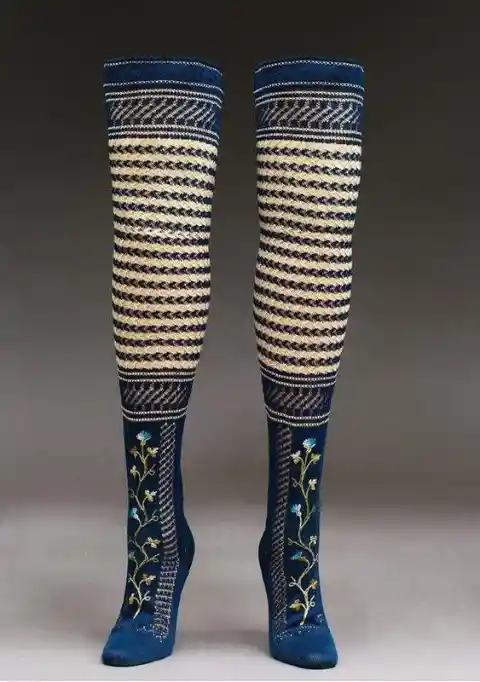
Two centuries ago, people wore knitted stockings to keep their feet warm and fashionable. FIDM Museum has a pair of these 200-year-old socks that look so fabulous! We don't know much about their origin, but we can admire their colors and texture.
Chand Baori Stairwell
In India, you will find an ancient architectural phenomenon called Chand Baori. With 3,500 steps and 13 levels, this structure is considered one of the most impressive stairwells in the world. It's also a sculptor's dream with beautiful patterns carved into each step.


Chand Baori is both old and new. The lower sections of Chand Baori are from the 8th century, and the upper sections were added in the 18th century. Chand Baori was used to collect rainwater for people who lived in areas that did not get enough rainfall.
Ivory Snake and Skull
We have seen many beautiful carvings and sculptures, but none of them is as detailed as this one. This carving of a snake and a skull, made from solid ivory and studded with carnelian gemstones, is an extreme example of artistic workmanship.
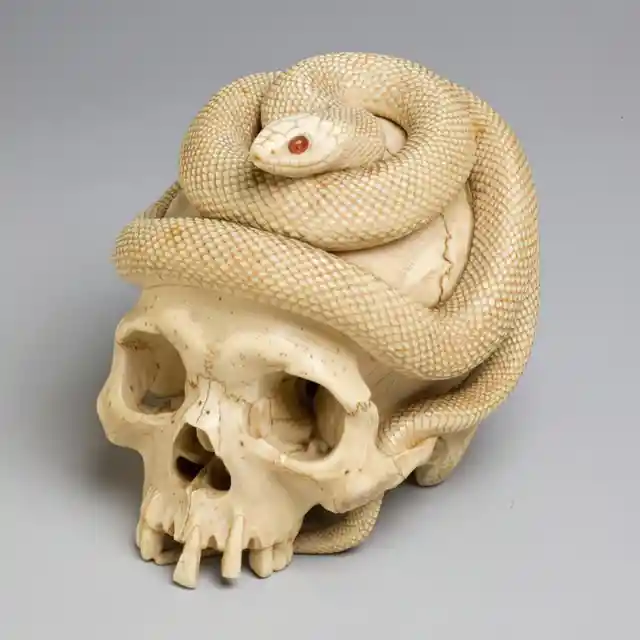
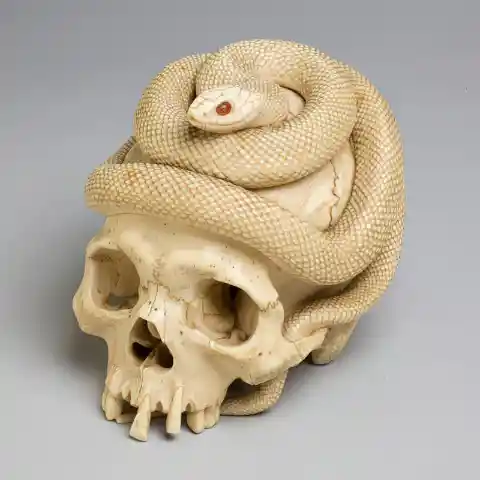
This incredible and realistic piece of art was created in Japan in 1860 at the end of the Edo period. It was created for an unknown patron, most probably a wealthy individual or company. On display at the Art Gallery of Greater Victoria in Canada, it is considered one of the greatest early examples of Japanese sculpturing.
Books from the 18th Century
It's fun to go to a charity or second-hand store and dig around for antiques. That's what an anonymous thrifter did when they bought two old books from Goodwill, only to discover that both of them were actually from the 18th century.
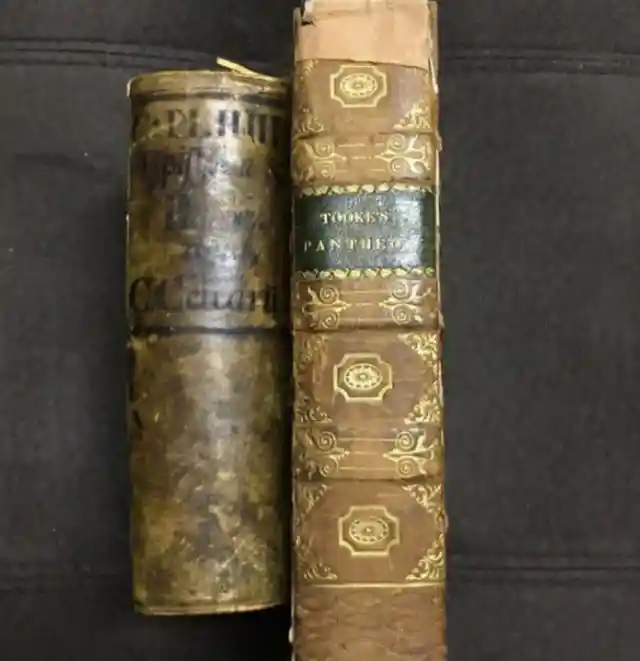
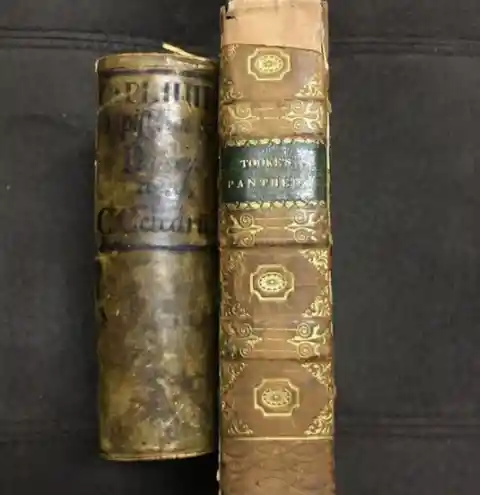
Both books were in remarkably good shape. Thanks to the leather covers, you can see that they are quite old. It was also interesting to see that one of them was a collection of letters by Pliny the Younger, and the other was a collection of essays on Greek Mythology.
Hammam Essalihine
In ancient Rome, the bathhouse was not just a place to clean yourself up. It was a social gathering spot. The Hammam Essalihine bathhouse is regarded as one of the best-preserved Roman bathhouses in the world.
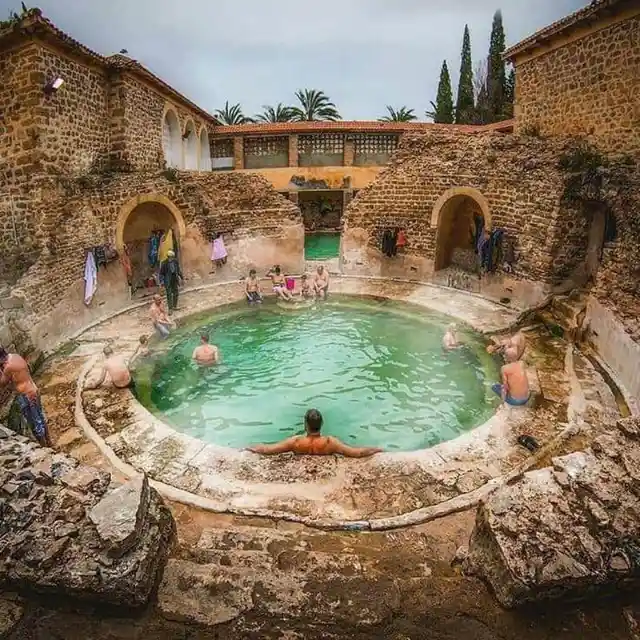
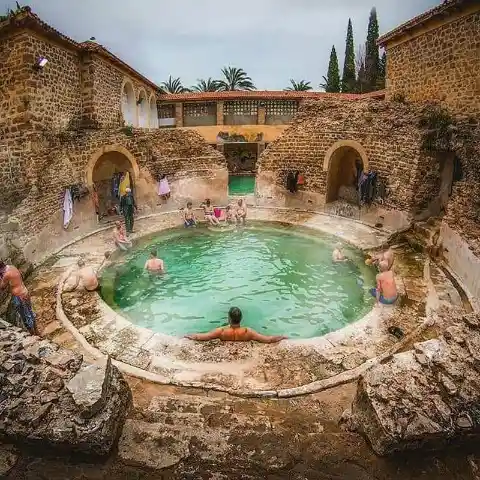
The Hamman Essalihine bathhouse, located in the modern-day Algerian province of Khenchela, was built around 60-190 AD. A series of wars and natural disasters have significantly damaged the structure, but it is still in use today. People believe that taking a bath here still has health benefits.
Roman Toddler Footprint
French archaeologists have found an imprint of a Roman-era toddler's foot on a 2,000-year-old clay tile. The imprint was discovered in the city of Vaison-la-Romaine in southern France, which was known as Vasio Julia Vocontiorum in Roman times.
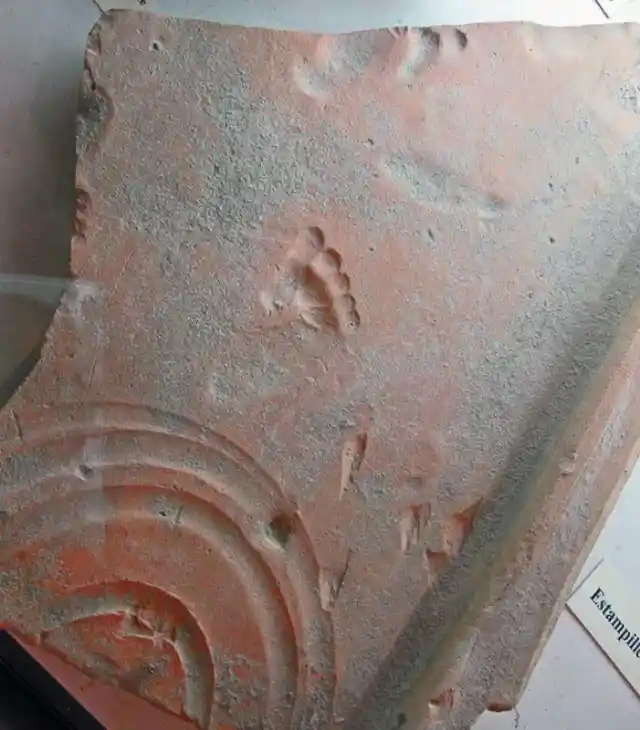
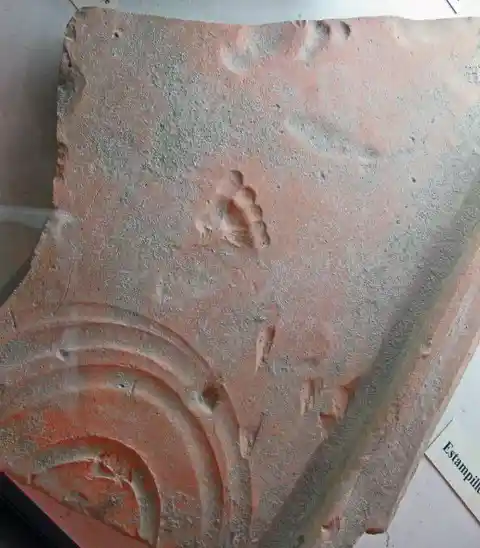
The small footprints, many of which are now filled in by the dirt and grime of the ages, are believed to be several hundreds of years old. The tiny toes suggest that they were made by a young child who was likely having had a wild time running around.
Statue of Moses
Few sculptures and artists of the past are able to carry as much awe, respect, and admiration as Michelangelo’s work does. His iconic statue of David is one of his most famous, but his Pieta, a sculpture of Mary holding the body of Jesus after the crucifixion, is also very well known and regarded.
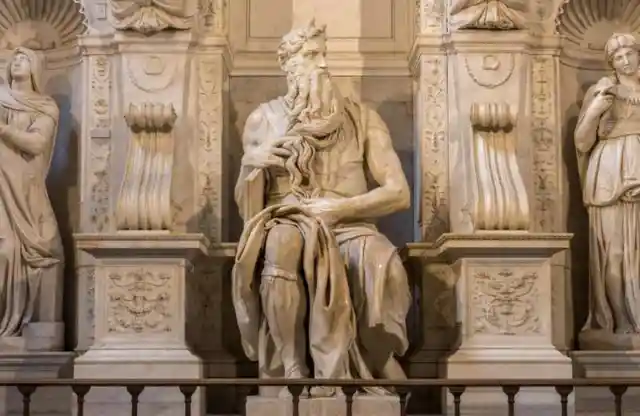
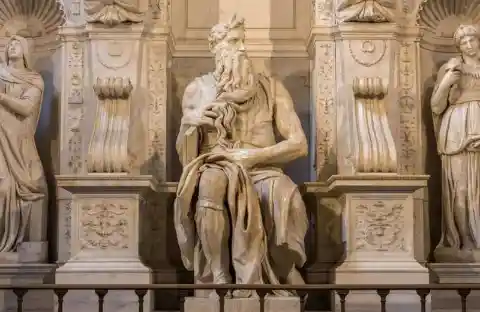
Rome's San Pietro in Vincoli church is a beautiful building—housing the famous sculpture of Moses is just icing on the cake! The statue, which shows every muscle in Moses’ body in incredible detail, definitively proves Michelangelo’s legendary understanding of human anatomy.
4,000 Year Old Oaken Wagon
Most preserved ancient treasures and relics have objects made of stone or other hard materials, like ivory or bone. Not many things made of wood have survived over such a long period of time—or so you might think. Not many of them exist, but some wooden objects are still around and even on display.
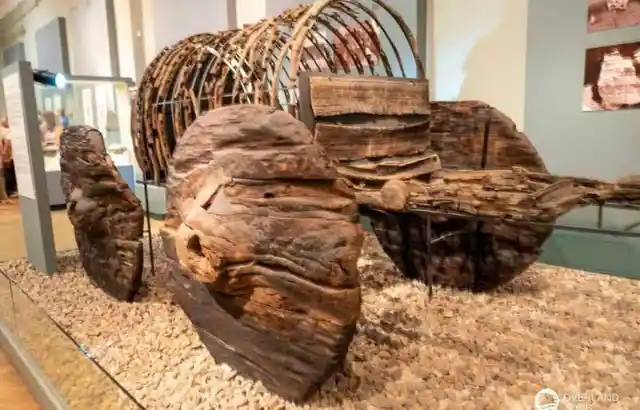
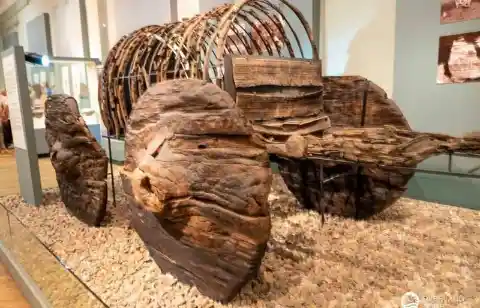
The History Museum of Armenia currently displays a wooden wagon that is over 4,000-year-old. It was found by archaeologists in the Armenian village of Lake Sevan. It's one of a dozen other wagons that have been discovered around the site so far.
Advanced Brain Operation
Before the invention of common anesthesia and antiseptics, many people believed that it was too painful and dangerous to operate on someone's organs and bones. Yet, as early as 400 A.D./C.E., medical investigators have found evidence that both amputations and brain surgery were actually performed by skilled hands with the aid of alcohol or opium-based medicines and other substances.
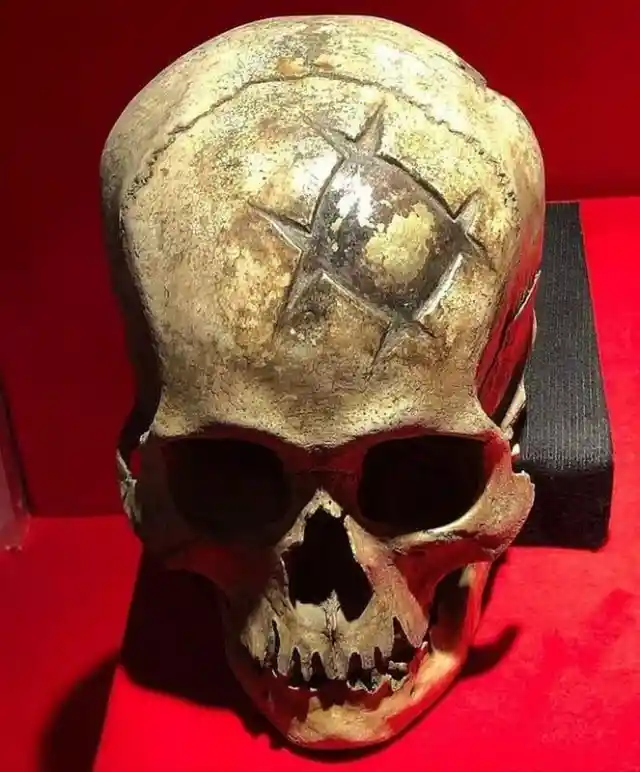
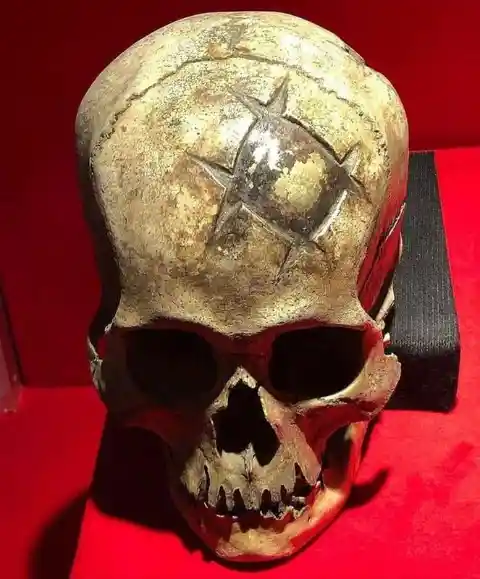
Researchers describe this operation as a crude cranioplasty that could have been performed either to correct a deformity in the skull or to remove a tumor. It is impossible to know whether or not the patient survived, but given how primitive the tools were and how much risk was involved, it is unlikely that the operation was a success.
All-in-one Invention
Pistols or revolvers are one of the most effective, deadliest inventions in the world. You have to wonder at the creativity of inventors in the past. Some ingenious soul came up with this: a pistol with a knife-edge, the blade of which also doubles as a calendar. Truly creative.
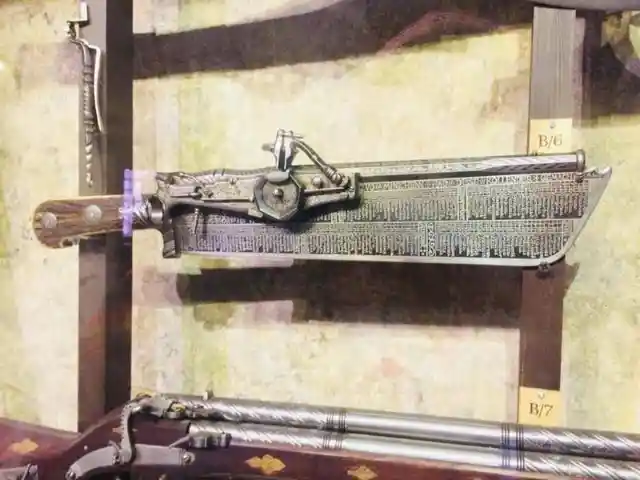
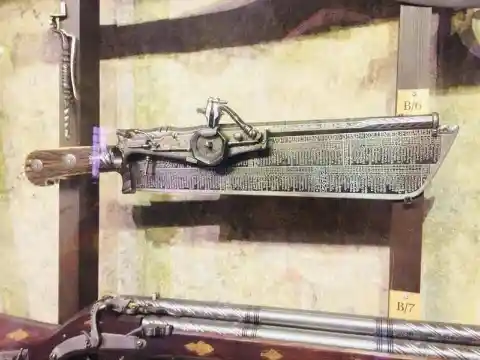
Sadly, there is very little information known about the inventor who created this strange weapon or whether it was ever used on a person. However, if you are curious to see it for yourself, it is currently housed in Prague Castle.